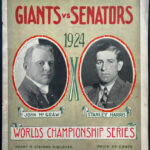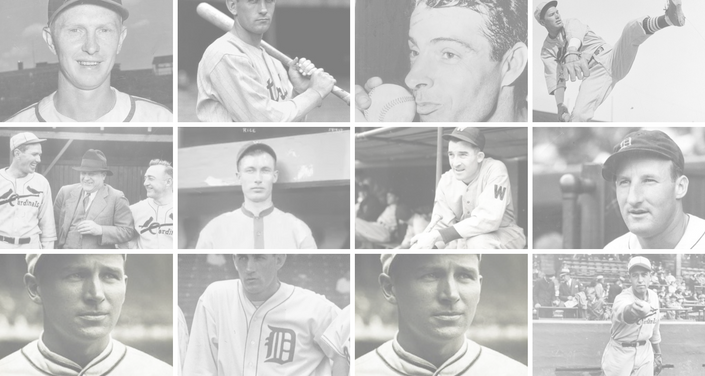Manager Bill McKechnie’s Reds out-hit the Yankees by more than a 2-to-1 margin in Game 3, but all 10 of Cincinnati’s hits were singles. New York, meanwhile, got two-run homers from rookie Charlie Keller in the first and fifth innings, a two-run blast from Joe DiMaggio (who batted a career-high .381 in the regular season) in the third and a bases-empty shot from Bill Dickey in the fifth. Enough said.
Before their homer-happy 7-3 triumph in Cincinnati, the Yankees had ridden the pitching of Red Ruffing and Monte Pearson to victories in Games 1 and 2 — games in which the major leagues’ winningest pitchers of 1939 went down to defeat. In the Series opener, Ruffing’s four-hitter beat 25-game winner Paul Derringer 2-1. With the score 1-1 in the ninth, Keller hit a one-out triple and, after an intentional walk to DiMaggio, trotted home on Dickey’s single. Matched against 27-game winner Bucky Walters in Game 2, Pearson tossed no-hit ball until Reds catcher Ernie Lombardi singled with one out in the eighth. Babe Dahlgren doubled and homered in support of Pearson, who wound up with a two-hit, 4-0 triumph.
Dahlgren had supplanted Lou Gehrig at first base for the Yankees, taking over May 2 when failing health and an accompanying decline in skills had forced Gehrig out of the New York lineup after 2,130 consecutive games. Not since 1923 had the Yankees engaged in postseason play without Gehrig.
Game 4 was a 0-0 battle until the seventh when Keller and Dickey slugged bases-empty home runs off Derringer. But the Reds came back in their half of the inning for three unearned runs off reliever Steve Sundra, who had replaced ailing starter Oral Hildebrand in the fifth, and tacked on an insurance run in the eighth off Johnny Murphy.
The Reds soon discovered they weren’t carrying enough insurance. And what they needed, it turned out, was collision insurance.
Shortstop Billy Myers’ error on Dickey’s potential double-play ball in the ninth — the run-scoring grounder enabled the Yankees to move within 4-3 — helped turn a possibly harmless inning into a game-tying rally. New York scored again in the inning when DiMaggio, who would have been a force out victim at second if not for Myers’ misplay, beat a throw to the plate on Gordon’s grounder to third baseman Bill Werber (with Gordon credited with a hit on the play).
With runners on the corners and one out in the Yankees’ 10th, DiMaggio singled to right, snapping the 4-4 tie. That would have been trouble enough for Cincinnati, but right fielder Ival Goodman misplayed the ball and another run — in the person of Keller — headed home. That, too, would have been trouble enough for Cincinnati, but catcher Lombardi not only failed to hold Goodman’s throw to the plate, but he also was knocked down by the onrushing Keller and the ball rolled away. As a result, DiMaggio was able to circle the bases as the Reds’ receiver lay stunned. “Schnozz’s snooze” the play was called, and it won a special place in baseball lore despite its seemingly minimal impact overall.
Murphy protected the Yankees’ 7-4 lead in the last of the 10th, working out of a jam in which the Reds sent the tying run to the plate three times. On the third such occasion, Wally Berger lined out to shortstop Frankie Crosetti. The New York Yankees, pulling off their second consecutive sweep, were World Series champions for the fourth consecutive year.
That the Reds had made it into their first Series since 1919, the year of the Black Sox scandal, was an amazing advance, considering Cincinnati had finished in the National League basement in 1937. For the Yankees, it was business as usual. Actually, a little better than usual: 106 victories and 45 losses. They won the pennant by 17 games.
Keller, 23, was the Series star, leading all regulars in runs scored (eight), hits (seven), home runs (three), RBIs (six) and batting average (.438).
Fittingly, such dominance as that exhibited by Keller came from a member of the Yankees, who had won 13 of their last 14 Series games and 28 of their last 31 games in baseball’s premier event.




